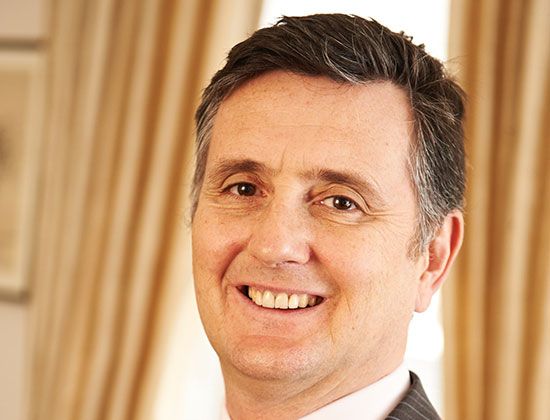-(1)-(1).jpg)
-(1)-(1).jpg)
As an official partner of the Rugby Players Association (RPA), Fortius Clinic supports members through their professional careers and during transition into retirement from professional sport.
Shoulder injuries are common in rugby players. Fortius Clinic Consultant Shoulder and Elbow Surgeon Mr Steven Corbett discusses types of shoulder dislocations and the treatment options.
The very nature of rugby results in massive contact forces being applied to the shoulder region. Usually injuries occur when either tackling or being tackled, or when landing on the shoulder. Whilst many injuries can be short lived, others can result in a significant period of absence from the game, and sometimes require surgical intervention.
Amongst the more common injuries are dislocations involving the glenohumeral joint (ball and socket) or the acromioclavicular joint (ACJ) on the top of the shoulder, where the collarbone (clavicle) meets the acromion bone.
Dislocations of the glenohumeral joint usually occur when the arm is outstretched trying to tackle an opponent, or landing on the shoulder with the arm in a similar position, or when in the jackal position. Occasionally the shoulder will reduce itself but more commonly it will need to be put back by someone else. A trip to the Accident and Emergency Department is likely. But if there’s a physiotherapist or health professional on the touchline the player might be lucky – the sooner the shoulder is back in place, the sooner the associated pain will ease.
The question then arises whether the shoulder will recover naturally or whether surgery needs to be considered. When the shoulder dislocates, it creates an injury pattern whereby one of the main structures in the shoulder (the labrum) tears and a divot is taken out of the ball. Unfortunately the labrum does not usually repair itself, so further dislocations are very likely to occur - in some people the risk can be 80-90%. The surgical options are to perform an arthroscopic repair of the labrum (keyhole surgery) or to move bone around in the shoulder to deepen the socket and provide reinforcement of the soft tissues, usually in an open procedure.
Undoubtedly physiotherapy and rehabilitation of the shoulder after surgery make a significant difference to both the speed and success of the recovery. In general terms, it takes 3 months to return to non contact drills, and more likely 5-6 months to full contact and a return to play. The rehabilitation period initially involves re-establishing range and control of movement, and then strengthening of the whole shoulder girdle. It isn’t just strengthening of the ‘mirror muscles’ - the pectoral, biceps and deltoid muscles - which is required. There is a specific focus on the rotator cuff muscles which help elevate, rotate and stabilise the shoulder.
Acromioclavicular joint (ACJ) dislocations are often due to a direct fall onto the point of the shoulder. The collarbone springs up out of the joint. There are varying degrees of injury depending on which supporting ligaments are torn by the impact. In some cases, the collarbone returns to close to its normal position, whilst in others it sticks up high above the contour of the shoulder and moves up and down on stressing or loading the joint.
Jonathan Webb, (ex-England fullback and Fortius Consultant Orthopaedic Surgeon), once surveyed his playing colleagues and reported that 96% had sustained an injury to the ACJ with varying degrees of deformity.
Fortunately, many of these injuries can be treated non operatively. In the lowest grade of injury, symptoms can settle over 4-6 weeks, whilst with a mid-range injury, a return to play at 8-12 weeks is more common. Occasionally players will have a steroid injection to reduce inflammation and enable them to have more physiotherapy and speed up their recovery.
In the higher grade injuries, surgery is more commonly recommended. The collarbone is reduced back into place and held by a ligament which replaces the ligaments that are torn. The new ligament can either be artificial or naturally occurring. After the surgery, the arm is normally immobilised in a sling for 2 weeks followed by a mobilisation, stabilisation and strengthening programme. Again, physiotherapy is an important component of rehabilitation. It usually takes 3-4 months to return to full contact rugby. But surgery has a very good chance of being successful.
